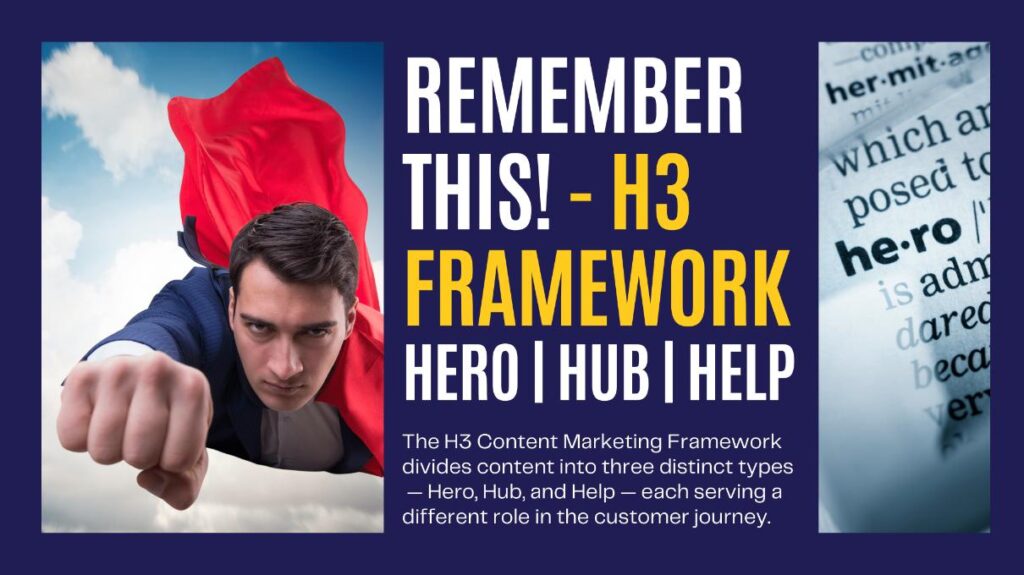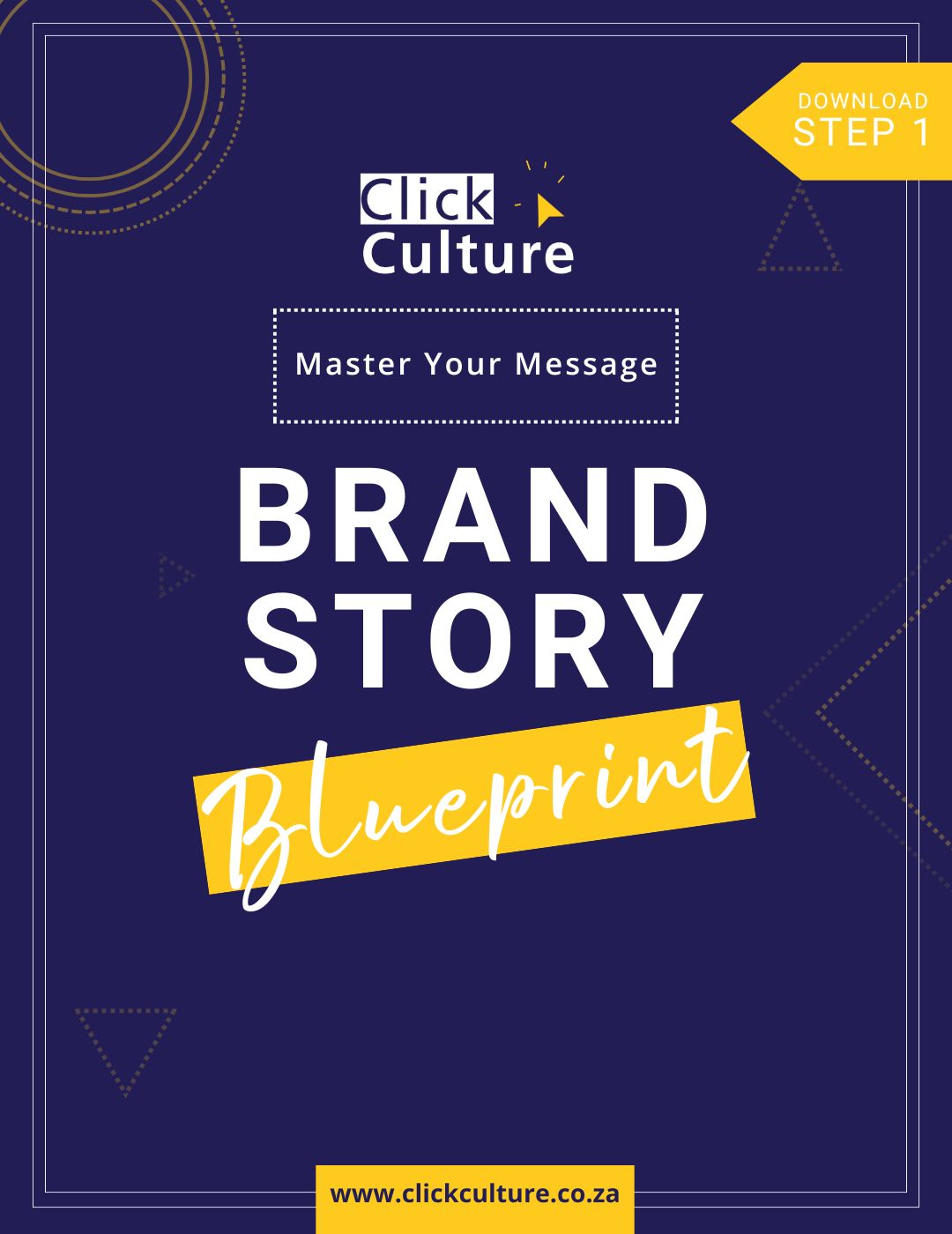I started to use the HERO, HUB, HELP (H3) Framework to level up the value I add to the brands I work with, and because I got so much out of it, I couldn’t keep it to myself.
I hope this helps your business or the brands you work on.
First Things, First – what is the H3 Framework?
The H3 Content Marketing Framework divides content into three distinct types—Hero, Hub, and Help—each serving a different role in the customer journey.
H3 helps brands balance big, attention-grabbing content with consistent, informative material that builds trust over time.
1. HERO Content (Attract)
HERO content is the big, bold material designed to attract attention and generate buzz. It’s usually tied to major campaigns, product launches, or key moments like Black Friday or announcements.
Examples of Hero Content:
Viral video ads like Apple’s iPhone releases or Nike’s inspirational campaigns.
Closer to home, the Beats by Wimpy campaign is another example, where Wimpy’s coffee station became a beatbox booth with South Africa’s top beatboxers freestyling to mimic cappuccino sounds to launch its R19.90 cappu-cc-no special. Kudos to Mike Sharman and the Retroviral team for shining a light so Wimpy could blend music, creativity, and coffee culture in a way only South Africa could pull off.
Large-scale social media competitions or giveaways.
Product reveals or event launches.
Why it works: It draws in large audiences and creates excitement, often at pivotal moments during the year.


Beats by Wimpy: After asking customers for their favourite songs, three of South Africa’s top beatboxers—Morgan Beatbox, Remix, and Thato Titisi—freestyled the requests while mimicking the sounds of a cappuccino being made.
2. HUB Content (Engage)
HUB content is consistent, regular material that keeps your audience engaged. It nurtures relationships with those already familiar with your brand, offering value that keeps them coming back.
Examples of Hub Content:
Weekly blog posts, podcasts, or newsletters.
Behind-the-scenes Instagram Stories that provide a peek into your brand’s everyday life.
An example of HUB was behind-the-scenes content shared online and in the media was Mahindra South Africa ’s 20th Anniversary celebration in South Africa (October 2024), tied in with their 20,000th unit rolling off the company’s assembly line in Durban. It came in the shape of the Mahindra Pik Up S6 4×4.
Although I think they could have made a far bigger noise than they did about this milestone (where’s the epic hero shot of the 20,000th Mahindra with a sneaky logo to reinforce the brand?) – it seems they were saving all the noise for the launch of the Mahindra XUV 3XO.
Although the X Launch is HERO content, it’s worth a special mention as the campaign just started, and I hear there’s lots more to come that will cover both HERO, HUB and HELP content (so look out for it). I spoke with Anél Du Plessis of The Messenger Network, who’s part of the team marketing the launch, and they have some unique strategies to generate and nurture leads, as well as connect with Mahindra customers with questions they may have (HELP content) while building brand loyalty. This will all be done through WhatsApp, from intuitive chatbots and workflows to bulk broadcasts with engaging multimedia and click-to-WhatsApp ads on Facebook (that you don’t get charged for by Meta with a 72-hour window to respond). I find this tech so exciting and although I’ve said it before – I’ll say it again – WhatsApp is blowing up y’all!

The image most media used to report on the milestone was a missed opportunity, in my opinion. They had an epic video clip showing off the car’s features and vibe, but pictures matter too.
3. HELP Content (Inform)
HELP content addresses the questions your audience is asking, solves problems, and meets their needs. It’s often evergreen and SEO-optimised, designed to bring in long-term organic traffic. It builds trust by positioning you as a helpful and knowledgeable resource.
Examples of Help Content:
How-to videos or tutorials.
Step-by-step guides or detailed product reviews.
FAQ sections
Why it works: It positions your brand as a trusted authority, building credibility and increasing search traffic over time.
Why the H3 Framework Makes a Difference:
Balanced Content Strategy: It ensures you’re not overly focused on just one type of content, but rather, you’re addressing the full customer journey—from awareness (Hero), to engagement (Hub), to conversion (Help).
Covers the Full Funnel: From attracting new leads to nurturing and converting them, it supports top, middle, and bottom-of-funnel efforts.
Scalability: You can scale content production effectively by focusing on what works at each stage of your audience’s journey, ensuring sustainable growth.
Flexibility: The framework adapts across industries, whether B2B SaaS or consumer retail brands.
Unfortunately, most people make these 5 mistakes when they use H3 Framework:
Mistake 1: over-focusing on HERO content. Many brands invest heavily in big campaigns but forget these are short-lived. Balance HERO efforts with ongoing HUB and HELP content to sustain engagement.
Mistake 2: inconsistent HUB content production. Not producing regular content leads to lost opportunities to nurture your audience. Set a schedule and stick to it to maintain steady engagement.
Mistake 3: Neglecting SEO. HELP content needs to be optimised for search engines. Don’t know too much about SEO? Ask ChatGPT for the best meta description or keywords to guide you and ensure your content ranks well.
Mistake 4: Not linking the three content types: HERO, HUB, and HELP content should work together. Use HUB content to promote HERO moments, and direct audiences to HELP content for further value.
Mistake 5: Failing to measure results: You won’t know what’s working without tracking performance. Set up analytics to measure each type of content and adjust based on insights.
Roxzanne van Eyk is a content strategist, ghostwriter and Founder of Click Culture.
Are you being ignored on social media? From confusion to clarity, get customers to pay attention to your marketing messages. Sign up for the Click Culture Newsletter for more helpful content marketing frameworks you can use in your business.



